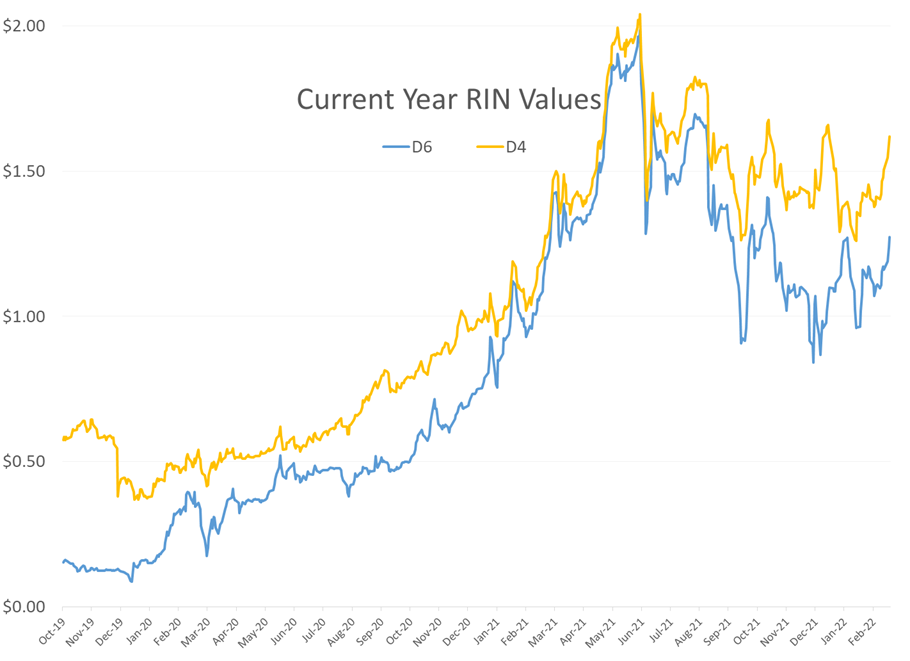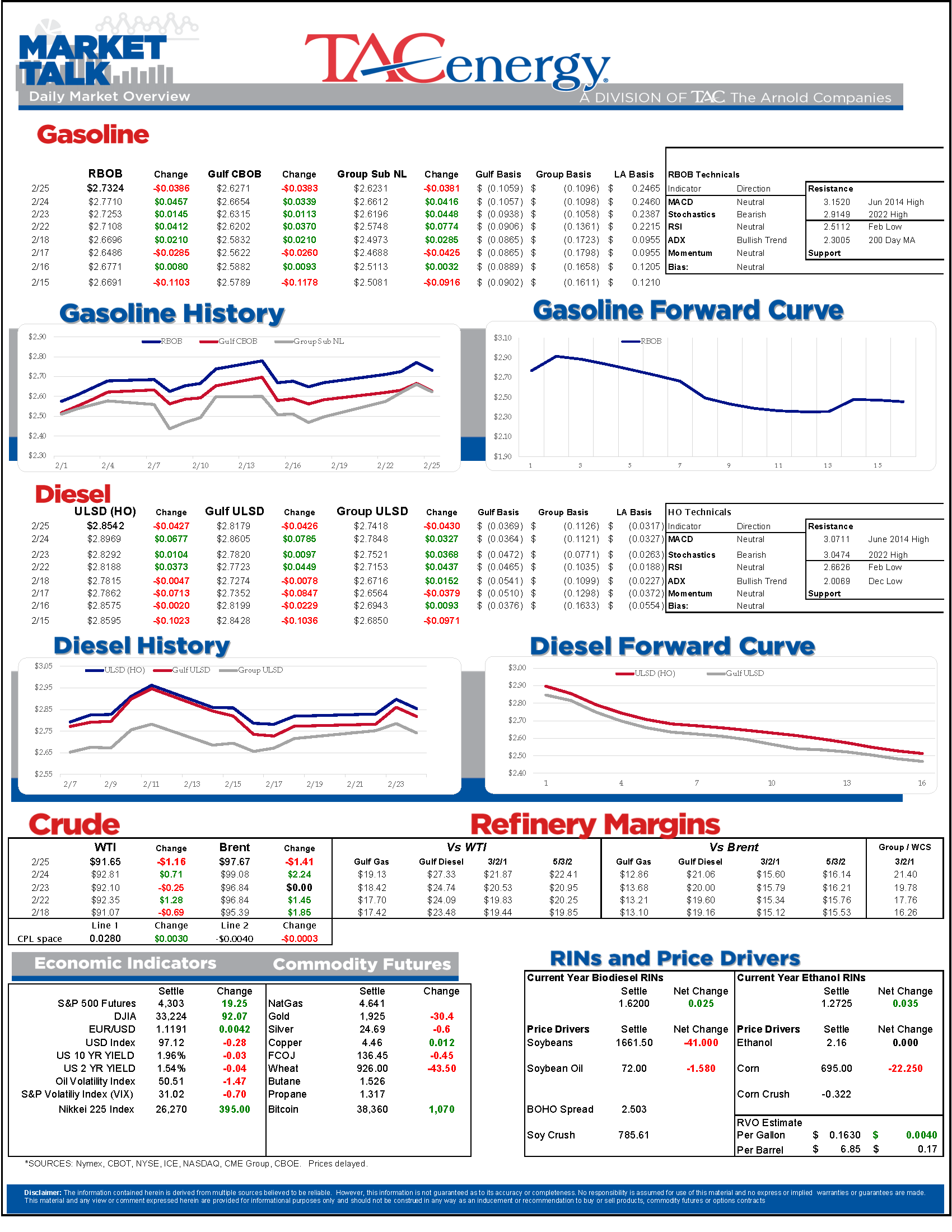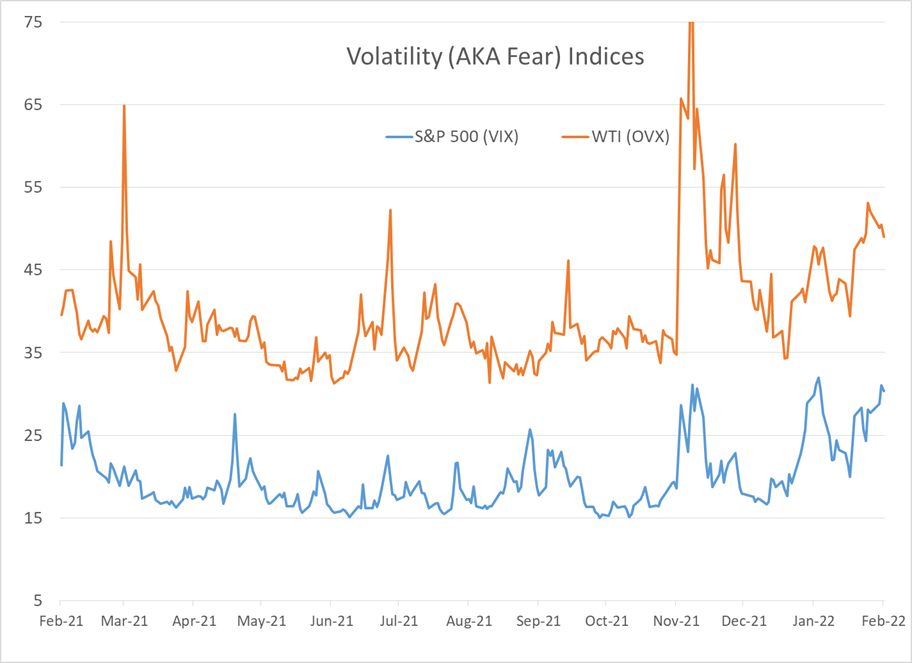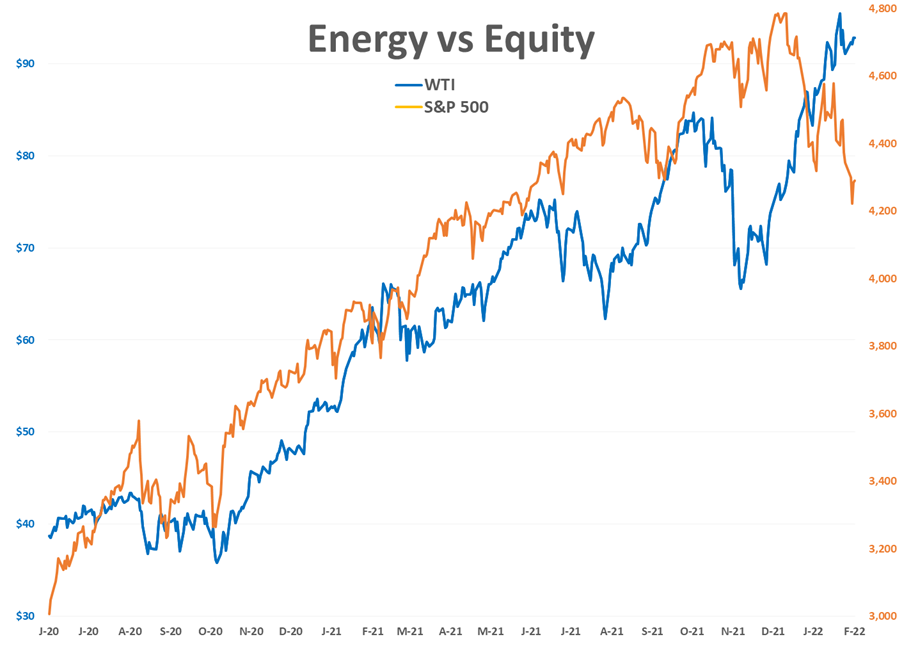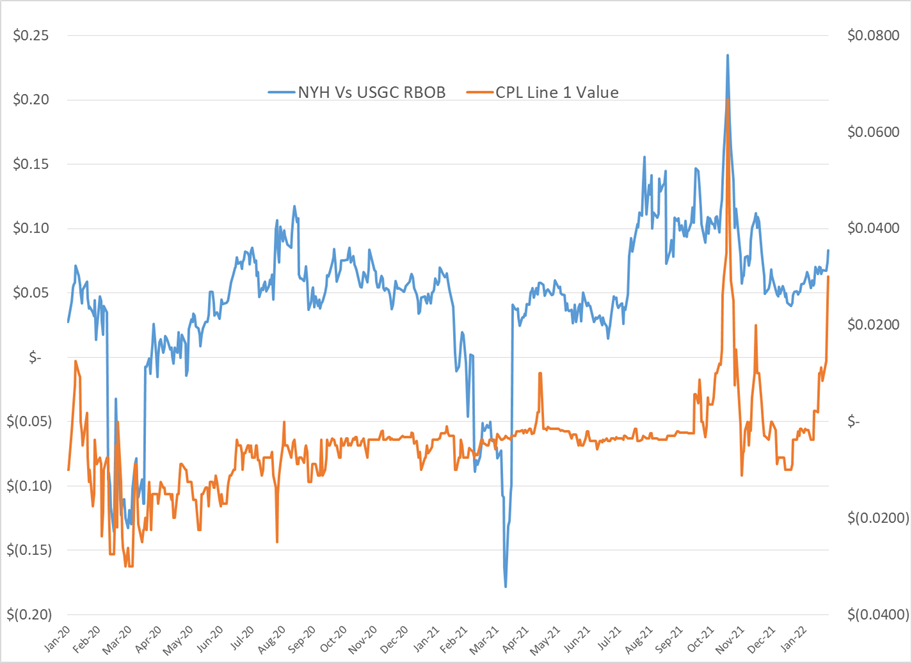Markets Around The World Are Transitioning From Full Panic To Major Discomfort As The Russian War On Ukraine Continues

Markets around the world are transitioning from full panic to major discomfort as the Russian war on Ukraine continues, but the fallout has been isolated so far. This time yesterday brought with it breathless comparisons to other notorious market shocks, as Europe was not only facing its most severe military conflict since WW2, but it came with an only-slightly-veiled threat of nuclear war should other countries try to intervene.
Equity markets staged a huge recovery Thursday afternoon, and energy prices pulled back sharply, as traders digested the new reality that most have only read about in history books online, with several factors seeming to play into the calming down we witnessed throughout the day.The US President had promised sanctions would be “swift and severe” if Russia invaded Ukraine. Thursday he announced a variety of moves that may be seen as severe, but avoided cutting Russia off from the SWIFT payment system, which is seen as a way to keep a penalty in reserve if needed, allow European banks to continue receiving loan payments from Russian firms, and probably most importantly, allow for Russian energy exports to continue.
Expectations that the FED would take it easier on interest rate hikes to try and offset some of the economic impact of the war & sanctions also seemed to encourage stock markets. The CME’s FedWatch tool shows that 2 days ago, there was a 33% probability of a 50 point rate hike at the March FOMC meeting, but that likelihood dropped to 21% yesterday.
While the panic has subsided, we’re a long way away from a calm market. After refined product prices pulled back 15-18 cents from the overnight highs Thursday afternoon, energy buyers did step back in pushing prices 5-6 cents higher last night, only to see a drop to 2-3 cent losses earlier this morning. That type of volatility is to be expected as long as the fighting and constantly changing stance on sanctions continues.
Physical product trading in the US had a fairly muted reaction, with most regional cash markets seeing only small basis moves on low liquidity, which is common when the futures market goes wild. RIN values did move higher on the day as the risk of trickle down effects from Black Sea supply disruptions to grain markets took hold, but like the rest of the energy contracts those prices pulled back sharply from the initial round of panic buying.
The lack of reaction in USGC products was particularly noteworthy given the ongoing shutdown of the products pipeline FKA Plantation as the company investigates a leak in Georgia. Values for shipping space on Colonial had already jumped last week as the annual RVP transition opened up the Gulf-East Coast arbitrage window, and those values held steady Thursday, suggesting the big physical traders aren’t yet too concerned that the pipeline will be down for long. There are already reports that some retail stations in the US are seeing long lines as consumers fill their various forms of fuel tanks due to the Russian invasion, and if the Plantation line stays down for another couple of days, that phenomenon could get much worse.
Some notes from the DOE report Thursday (that no one seemed to pay attention to for more than a minute or two):
US diesel inventories declined for a 6th consecutive week, and are holding 30 million barrels (nearly 1.3 billion gallons) below their average for this time of year. Demand both domestically and abroad remains strong, which helps explain why the coasts (PADDs 1, 3 and 5) are all tight, while the landlocked locations (PADDs 2 & 4) are relatively well supplied. There’s a similar but less severe phenomenon with US Gasoline inventories which are slightly below average in total, with coastal markets seeing tighter supplies than normal. Another theme is that while supplies are well below year-ago levels this week, that’s about to change for many markets as refiners continue to operate relatively well through a parade of winter storms, and while there have been a handful of upsets, there is nothing even remotely resembling the disruption we were facing a year ago.
Latest Posts
Gasoline Futures Are Leading The Way Lower This Morning
The Sell-Off Continues In Energy Markets, RBOB Gasoline Futures Are Now Down Nearly 13 Cents In The Past Two Days
Week 15 - US DOE Inventory Recap
Prices To Lease Space On Colonial’s Main Gasoline Line Continue To Rally This Week
Social Media
News & Views
View All
Gasoline Futures Are Leading The Way Lower This Morning
It was a volatile night for markets around the world as Israel reportedly launched a direct strike against Iran. Many global markets, from equities to currencies to commodities saw big swings as traders initially braced for the worst, then reversed course rapidly once Iran indicated that it was not planning to retaliate. Refined products spiked following the initial reports, with ULSD futures up 11 cents and RBOB up 7 at their highest, only to reverse to losses this morning. Equities saw similar moves in reverse overnight as a flight to safety trade soon gave way to a sigh of relief recovery.
Gasoline futures are leading the way lower this morning, adding to the argument that we may have seen the spring peak in prices a week ago, unless some actual disruption pops up in the coming weeks. The longer term up-trend is still intact and sets a near-term target to the downside roughly 9 cents below current values. ULSD meanwhile is just a nickel away from setting new lows for the year, which would open up a technical trap door for prices to slide another 30 cents as we move towards summer.
A Reuters report this morning suggests that the EPA is ready to announce another temporary waiver of smog-prevention rules that will allow E15 sales this summer as political winds continue to prove stronger than any legitimate environmental agenda. RIN prices had stabilized around 45 cents/RIN for D4 and D6 credits this week and are already trading a penny lower following this report.
Delek’s Big Spring refinery reported maintenance on an FCC unit that would require 3 days of work. That facility, along with several others across TX, have had numerous issues ever since the deep freeze events in 2021 and 2024 did widespread damage. Meanwhile, overnight storms across the Midwest caused at least one terminal to be knocked offline in the St. Louis area, but so far no refinery upsets have been reported.
Meanwhile, in Russia: Refiners are apparently installing anti-drone nets to protect their facilities since apparently their sling shots stopped working.
Click here to download a PDF of today's TACenergy Market Talk.

The Sell-Off Continues In Energy Markets, RBOB Gasoline Futures Are Now Down Nearly 13 Cents In The Past Two Days
The sell-off continues in energy markets. RBOB gasoline futures are now down nearly 13 cents in the past two days, and have fallen 16 cents from a week ago, leading to questions about whether or not we’ve seen the seasonal peak in gasoline prices. ULSD futures are also coming under heavy selling pressure, dropping 15 cents so far this week and are trading at their lowest level since January 3rd.
The drop on the weekly chart certainly takes away the upside momentum for gasoline that still favored a run at the $3 mark just a few days ago, but the longer term up-trend that helped propel a 90-cent increase since mid-December is still intact as long as prices stay above the $2.60 mark for the next week. If diesel prices break below $2.50 there’s a strong possibility that we see another 30 cent price drop in the next couple of weeks.
An unwind of long positions after Iran’s attack on Israel was swatted out of the sky without further escalation (so far anyway) and reports that Russia is resuming refinery runs, both seeming to be contributing factors to the sharp pullback in prices.
Along with the uncertainty about where the next attacks may or may not occur, and if they will have any meaningful impact on supply, come no shortage of rumors about potential SPR releases or how OPEC might respond to the crisis. The only thing that’s certain at this point, is that there’s much more spare capacity for both oil production and refining now than there was 2 years ago, which seems to be helping keep a lid on prices despite so much tension.
In addition, for those that remember the chaos in oil markets 50 years ago sparked by similar events in and around Israel, read this note from the NY Times on why things are different this time around.
The DOE’s weekly status report was largely ignored in the midst of the big sell-off Wednesday, with few noteworthy items in the report.
Diesel demand did see a strong recovery from last week’s throwaway figure that proves the vulnerability of the weekly estimates, particularly the week after a holiday, but that did nothing to slow the sell-off in ULSD futures.
Perhaps the biggest next of the week was that the agency made its seasonal changes to nameplate refining capacity as facilities emerged from their spring maintenance.
PADD 2 saw an increase of 36mb/day, and PADD 3 increased by 72mb/day, both of which set new records for regional capacity. PADD 5 meanwhile continued its slow-motion decline, losing another 30mb/day of capacity as California’s war of attrition against the industry continues. It’s worth noting that given the glacial pace of EIA reporting on the topic, we’re unlikely to see the impact of Rodeo’s conversion in the official numbers until next year.
Speaking of which, if you believe the PADD 5 diesel chart below that suggests the region is running out of the fuel, when in fact there’s an excess in most local markets, you haven’t been paying attention. Gasoline inventories on the West Coast however do appear consistent with reality as less refining output and a lack of resupply options both continue to create headaches for suppliers.

